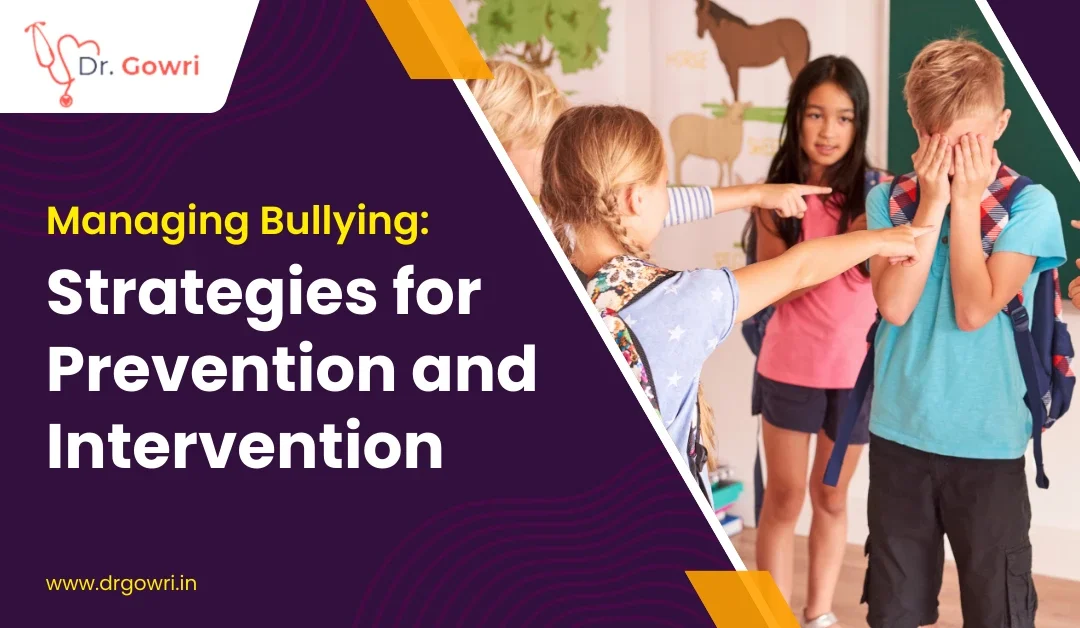Bullying is a serious issue that affects people of all ages in different environments, including schools, workplaces, and online platforms. If you are being bullied, it’s essential to know that it’s not your fault. The only person at fault in such a situation is the bully. Victims may experience feelings of fear, anxiety, and isolation, leading to severe psychological outcomes, including depression, low self-esteem, and even suicidal ideation. So, by being preventive, we can create more respectful and secure worlds.
Defeat the Bullying Beast: Take a Stand and Fight Back!
If you are being bullied, it’s essential to know that it’s not your fault. The only person at fault in such a situation is the bully. Nevertheless, here are some things you can do to deal with it:
Ⅰ. Managing Bullying as a Victim-
If you are being bullied, it is important to take action to protect yourself and prevent further harm. The first step is to stay calm and assertive. Bullies often seek an emotional reaction, so maintaining confidence and composure can reduce their power over you. Instead of walking away express that their behaviour is unacceptable.
Seeking support is crucial in handling bullying. Talk to a trusted friend, teacher, family member, or counsellor about what you are experiencing. They can offer guidance and help you take appropriate steps.
Ⅱ. Managing Bullying as a Parent-
Parents play a vital role in guiding their children through bullying experiences. It is important to recognize the signs that a child might be facing bullying. These signs may include changes in behaviour, such as withdrawal from social activities, reluctance to go to school, declining academic performance, or frequent complaints of physical ailments like headaches or stomach aches.
Encourage open communication and validate their feelings. It is also important to monitor their online activity to ensure they are safe from cyberbullying. Taking action by collaborating with teachers and school administrators can lead to effective intervention.
Ⅲ. Managing Bullying in Schools-
Schools have a responsibility to create a safe learning environment for students. One of the most effective ways to manage bullying is by implementing clear anti-bullying policies. These policies should define bullying behaviour, give consequences, and provide a safe and confidential way for students to report incidents.
Schools can organize awareness programs, workshops, and campaigns that encourage kindness, inclusivity, and respect.
Ⅳ. Managing Cyberbullying-
With the rise of digital communication, cyberbullying has become a significant concern. Cyberbullying includes online harassment, spreading rumours, sharing private information without consent, and sending threatening messages. Since cyberbullying can occur anonymously, it can be even more damaging than traditional bullying.
If cyberbullying occurs, it is important not to engage with the bully. Instead, save evidence of the bullying, such as screenshots, and report the behaviour to the appropriate platform or authority.
Ⅴ. Managing Workplace Bullying-
Bullying is not limited to schools, it also occurs in professional settings. Workplace bullying can take the form of verbal abuse, exclusion, intimidation, or sabotage. It can create a toxic work environment, leading to stress, anxiety, and decreased productivity.
To manage workplace bullying, employees should document incidents, including specific details of what was said or done. In cases where workplace policies fail to address the issue, seeking legal advice may be necessary.
Ⅵ. The Role of Society in Managing Bullying-
Addressing bullying requires an honest effort from society as well. Raising awareness through educational campaigns, social media advocacy, and community programs can help change attitudes.
Mental health support is also crucial in managing bullying. Promoting self-care activities and resilience-building programs can empower individuals to handle bullying situations effectively.
Creating a Supportive Environment:
Long-term management of bullying requires the establishment of supportive surroundings that prioritize mental well-being and promote positive relationships among individuals.
1. Promoting Empathy Education: Integrating empathy education into curriculum and training programs is essential. Empathy-building activities can enhance individuals’ emotional intelligence, helping them understand and appreciate the feelings of others.
2. Leadership Involvement: Leaders in educational institutions and workplaces play a crucial role in shaping organizational culture. By actively participating in anti-bullying initiatives, leaders can demonstrate their commitment to creating a safer environment.
3. Monitoring and Assessment: Continuous monitoring and assessment of anti-bullying programs are necessary to determine their effectiveness. Surveys, feedback sessions, and focus groups can provide valuable insights into the experiences of individuals within the community.
By applying these strategies and implementations, institutions can refine their work environments and adapt to the evolving nature of bullying.
About the Author

Dr. Gowri Ravi Chinthalapalli is a Developmental and Family Physician with over 16 years of experience in child development and family medicine. She has treated more than 50,000 patients worldwide. After completing her MBBS from Rajiv Gandhi University of Health Sciences, she pursued MRCGP from the UK and gained wide experience in primary care and emergency medicine. She also holds a Fellowship in Child Development from the Centre for Child Development and Disabilities, Bengaluru. Dr. Gowri currently practices at Aster CMI Hospital and Canara Diagnostic Centre, Bengaluru. She is passionate about guiding families, supporting children with developmental needs, and providing holistic care.

